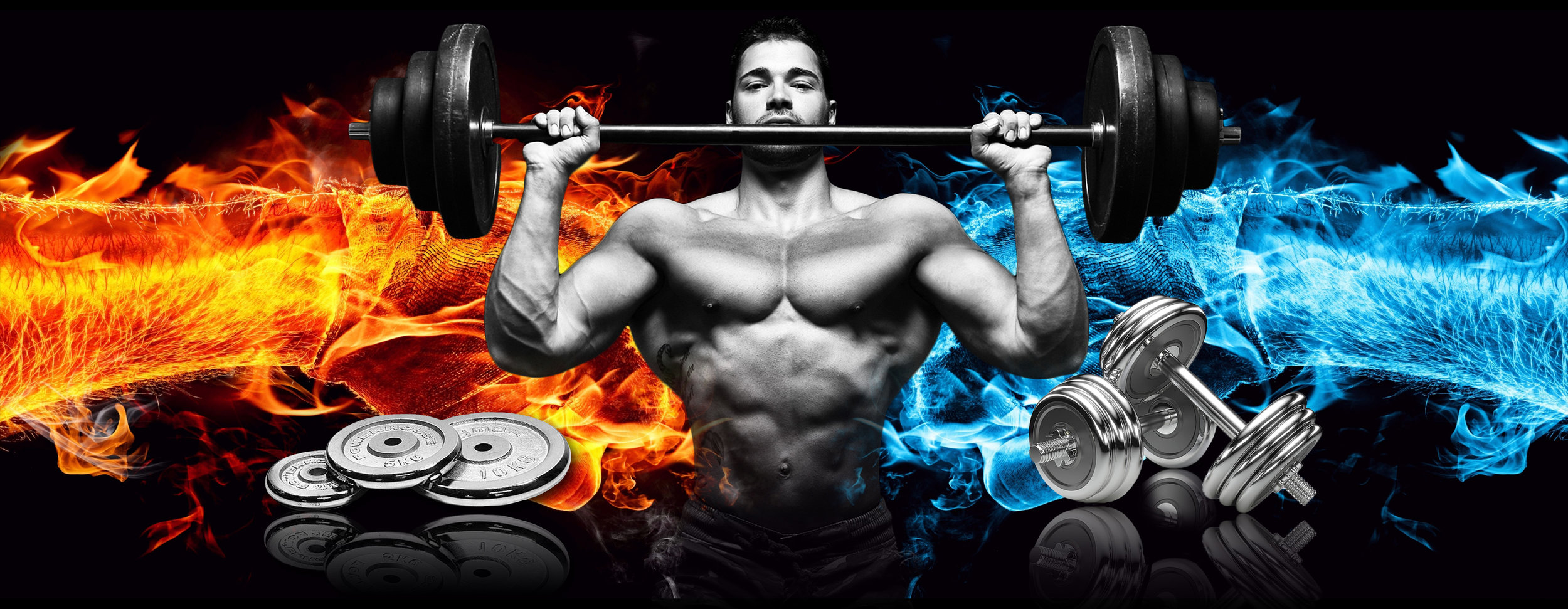A Better Substitute For Dumbbells, Kettlebells, and Farmers Walk Handles
Dr. Joel Seedman, Ph.D.
If you’re looking for a training method that allows isolateral loading (both sides/arms loaded independently) similar to that of dumbbells, kettlebells, and farmers walk handles, but also provides greater freedom for heavy overload and unique variations, look no further than the isolateral trap bar method. Simply flip one or two trap bars on there side and treat them like heavy dumbbells, kettlebells, or farmers walk grips. As shown from the video, you can perform a variety of movements including deadlifts, squats, RDL’s, lunges, chest presses, bent over rows, farmers walks, overhead presses, and more.
On a side note, big shout out to T-Nation’s very own, Chris Shugart and TC Luoma as they first highlighted farmers walk variations of these over 13 years ago. So yes, they’ve been tried and tested for well over a decade. Besides providing a unique training stimulus, there are 6 reasons why the isolateral trap bar method is so effective.
1. This technique is perhaps the single most natural method I’ve found for performing heavy isolateral axial loaded movements such as deadlifts, close stance squats, and RDL’s. For instance most gyms rarely have dumbbells and kettlebells that go beyond 120 lbs. Even if they do, performing traditional deadlifts and squat patterns can feel quite unnatural with larger dumbbells and kettlebells due to the size of the instruments that tend to run into the thighs. The isolateral trap bar method allows the lifter to load as much weight on the bars as is needed to amply overload the larger muscles of the legs, back, traps, and forearms without worrying about running into their body. That’s because the trap bar width is quite narrow and fits very naturally to the sides of the body. As a result this method is quite effective for building functional strength and hypertrophy while ensuring symmetrical loading.
For instance the total load I’m shown using in this video for the deadlift squat is close to 200 pounds in each hand (including the chains) which is significantly greater than what I would ever perform with dumbbell or kettlebell loading. Although they look a bit unusual, every athlete and client I’ve had perform deadlifts, squats, hinges, and other heavy axial loading movements has mentioned how surprised they were at how natural and comfortable the isolateral trap bar protocol feels.
2. Perhaps the most common issue that limits isolateral loading methods is grip and forearm strength. For instance most of my athletes including myself have difficult gripping anything significantly past 120 pounds when in it comes to heavy dumbbell exercises such as RDL’s or farmers walks. However, due to the hanging nature of the isolateral trap bar method, grip strength is rarely an issue and in fact most of my athletes are able to handle well in excess of 50% more loading than they would with dumbbells. In this particular video I’m using approximately 200 pounds in each hand without grip slippage being an issue.
This feature allows the athlete to overload the larger muscles of the body during squats, deadlifts, hinges, and farmers walks, without the grip giving out as they typically would on other isolateral protocols. On a similar note, the grip and forearms still get pummeled but this stimulus occurs at significantly heavier loads as the larger muscles and grip tend to fatigue at a similar rate rather than the grip giving out first. Here’s an example with MLB pro baseball players Austin Meadows.
3. Performing chest presses, and overhead presses with the isolateral trap bar protocol represents some of the most challenging upper body movements I’ve ever performed. Although you’ll be able to handle 80-90% of the load you would typically handle on dumbbells or kettlebells, the instability that results from the hanging nature of the trap bar is incredibly high forcing more motor units and muscle fibers to activate. The degree of mechanical tension, metabolic stress, and muscular pump induced from these is through the roof making them highly effective for triggering new muscle growth.
4. The isolateral trap bar method is very conducive for incorporating accommodating resistance particularly chains as the handles provide perfect slots to place multiple chains through. As a result the lifter can deload the weaker bottom portion of the movement while overloading the stronger top half. This stresses the muscles even further while minimizing stress to the joints, spine, and connective tissue. Shout out to Ben Lai for helping me come up with this great idea.
5. I’m a huge fan of farmers walk handles as they’re great for performing heavy loaded carries. However I’ve found that the isolateral trap bars function just as well if not better than farmers walk handles for performing these movements as the weights sit very naturally to the sides of the body allowing comfortable yet maximal loading. And for those worried about height being an issue in terms of the bars hitting the floor, you’ll notice I have my client Leslie performing these (125 pounds in each hand) without the bars ever touching the floor. So for most lifters, height will not be an issue unless you have arms that resemble those of a baboon.
6. Although they allow heavy overload on axial loaded movements such as deadlifts and hinges, the trap bars are still semi-unstable. This is not an issue provided the individual locks the movement in with perfect mechanics. If they do the trap bars feel perfectly dialed in. If not it feels like the bars are tilting back and forth in your hands. As a result the isolateral trap bar method is excellent for cleaning up movement mechanics and form issues as you’re forced to move in a smooth and controlled fashion.
Additional Notes:
On a side note, farmers walk handles can be used in a similar fashion as the isolateral trap bar method for movements such as the deadlifts, squats, RDL’s, rows, and lunges. However, performing presses such as flat, incline, and overhead presses, are not as natural or practical as the implements will tend to run into the forearms throughout. The trap bar provides the perfect space for the arms to move without running into the bars as there’s approximately 24 inches between the two ends of the side-bars.
Similarly, traditional barbells can also be used for these movements (i.e. javelin or suitcase variations).
However grip slippage and instability issues commonly associated with these tend to minimize the degree of overload the individual can use. One benefit of using traditional barbells is you won’t have to stand on a bench to perform squats, deadlifts, hinges, rows, and lunges.
In addition, if you’re goal is to focus more on stability and mechanics then traditional barbell variations are going to be a better option. If the goal is to focus more on overload while still incorporating a level of instability then the isolateral trap bar method is superior. I recommend using both protocols in your training routine periodically.
Each of these exercises can be performed in an isolateral fashion (both arms at once working/loaded independently), or unilaterally (one arm at a time), which further emphasizes core stability.
If you’re looking for a training program and instructional guide that teaches you how to incorporate different movements such as these into your training routine, check out my Complete Templates Series.






























